Buttercup (Ranunculaceae)
Wild Columbine
Aquilegia canadensis L.This prairie perennial lives only 3-5 years, but can spread easily from seed. It is well adapted to survive fire and drought. In the past, seeds and roots have been used for medicinal purposes. Although its flowers are not fragrant, deep nectar tubes attract birds, butterflies and bees with long tongues. This energy source is especially important to hummingbirds. Mammals however, rarely feed on Wild Columbine because of its poisonous leaves.
Flower Colour:
- Red
Flowering Season:
- Spring
- Summer
Flowering Months:
- April
- July
- June
- May
Canadian Rarity Status:
Not rare. Listed as “may be at risk” in New Brunswick.
Physical Appearance:
The green to reddish stems of Wild Columbine grow to 90 cm tall. Leaves are alternate, with long stalks. Each leaf is divided into 3 leaflets, with 3 lobes each, and edges resembling rounded teeth. Flowers nod characteristically downwards from long stalks. Each one has 5 yellow petals that form long, red, tubular nectar spurs, and 5 red sepals overlapping the petals. Bright yellow stamens and styles hang down conspicuously. Pod-shaped fruits split open at maturity to release small shiny black seeds.
Similar Species:
Small-flowered Columbine (Aquilegia brevistyla Hook.)
Gardening Notes:
Seeds and/or plants are often available from greenhouses and seed supply companies specializing in native plants. Good for woodland and meadow gardens, attracting hummingbirds and butterflies.
Canadian Distribution:
- Manitoba
- New Brunswick
- Ontario
- Quebec
- Saskatchewan
Prairie Types:
- Tall Grass Prairie
Habitats:
- Forest Edges
- Peat Bogs
- Prairies
- Roadsides
- Rocky Slopes
Moisture Conditions:
- Dry
- Moderate
- Moist
Light Preference:
- Full Sun
- Part Shade
Soil Preference:
- Acidic
- Loam
- Sand






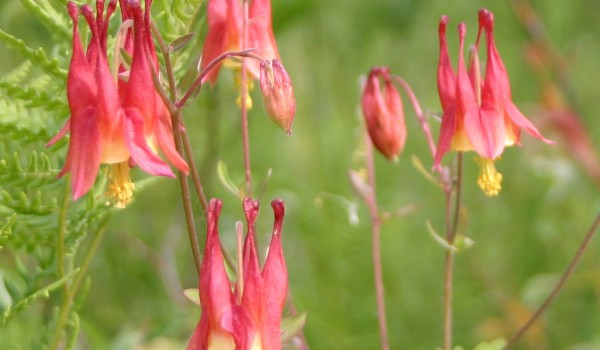
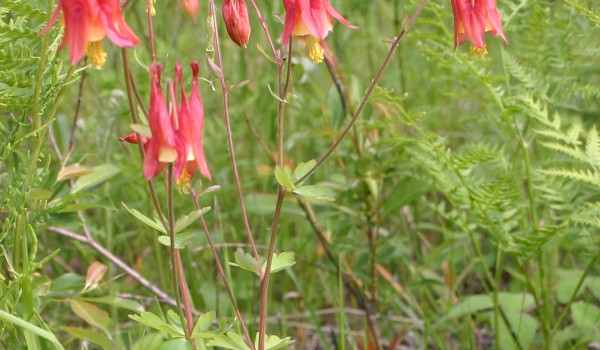
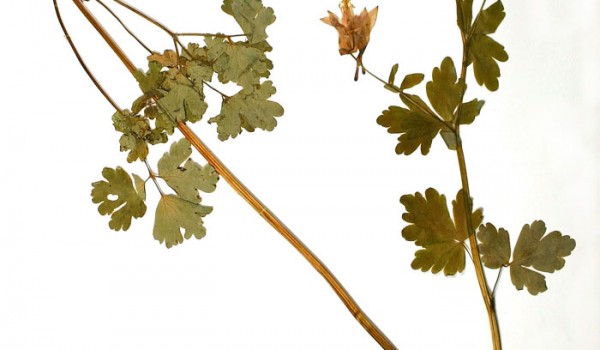
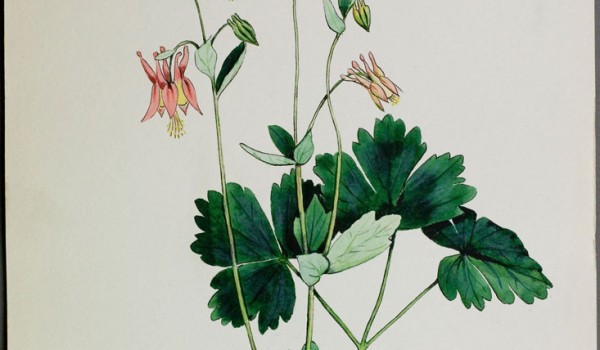
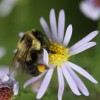 Bumble, Honey, and other Bees (
Bumble, Honey, and other Bees (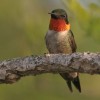 Hummingbirds (
Hummingbirds (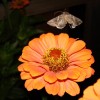 Owlet Moths (
Owlet Moths (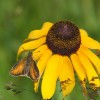 Skippers (
Skippers (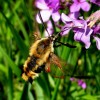 Sphinx and Hawk Moths (
Sphinx and Hawk Moths (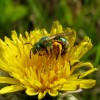 Sweat Bees, Halictid Bees and other Bees (
Sweat Bees, Halictid Bees and other Bees (